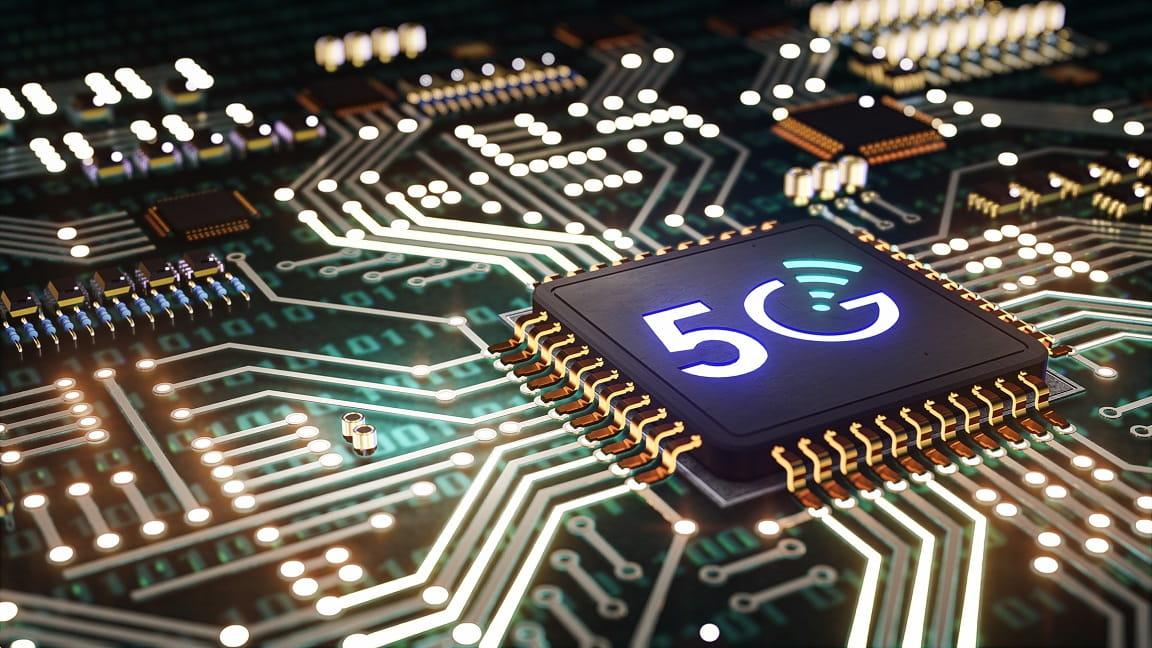RF Chips: The Core Driving Force of Wireless Communications
In the rapidly evolving field of wireless communications, Radio Frequency Integrated Circuits (RFICs) play a pivotal role. Serving as the bridge between the digital and physical worlds, RF chips are not only responsible for transmitting and receiving information but also serve as the core driving force behind the advancement of cutting-edge technologies such as 5G and the Internet of Things (IoT).
RF Chips Overview
 RF chips, in simple terms, are electronic components that convert binary digital signals into electromagnetic signals for transmission or convert electromagnetic signals back into digital signals. They are positioned at the front end of wireless communication systems and are crucial for enabling wireless information transfer. The performance of RF chips directly determines the coverage area, data transmission rate, and signal quality of communication systems.
RF chips, in simple terms, are electronic components that convert binary digital signals into electromagnetic signals for transmission or convert electromagnetic signals back into digital signals. They are positioned at the front end of wireless communication systems and are crucial for enabling wireless information transfer. The performance of RF chips directly determines the coverage area, data transmission rate, and signal quality of communication systems.
The internal architecture of RF chips typically includes receiving and transmitting channels. During reception, the antenna converts electromagnetic waves received from the base station into weak AC current signals, which are then filtered, amplified, and demodulated by an intermediate frequency demodulator to obtain the received baseband information. During transmission, the baseband information processed by logic circuits is modulated into intermediate frequency signals, amplified by a power amplifier, and radiated as electromagnetic waves by the antenna.
Classification and Functions of RF Chips
1. RF Transceiver Chips
Low-Noise Amplifier (LNA): Amplifies received weak RF signals to improve signal quality.
Power Amplifier (PA): Enhances the power of transmitted signals to ensure long-distance transmission.
Mixer: Achieves signal frequency conversion and modulation/demodulation, serving as the core component of RF transceiver systems.
2. RF Front-End Chips
RF Switch: Controls the on/off state of RF signals and switches between frequency bands.
Filter: Filters out unwanted signals, retains signals within the target frequency band, and improves communication quality.
Duplexer: Ensures effective isolation of transmitted and received signals on the same antenna.
3. RF Identification Chips (RFID)
Passive RFID: Relies on an external RF field for power to read item information.
Active RFID: Contains an internal power supply and actively transmits RF signals, supporting longer-distance information reading and writing.
4. Other RF Chips
RF Counter: Used to count the frequency, waveform, and other parameters of RF signals.
Standard Oscillator: Provides a stable clock signal to ensure the accuracy of communication system operation.
Market Status of RF Chips
Currently, the RF chip market is dominated by a few international giants, such as Skyworks, Qorvo, Broadcom, and Murata. These companies have expanded their market share through mergers, acquisitions, and technological innovations, occupying over 85% of the global RF front-end chip market. However, with the proliferation of technologies such as 5G and IoT, market demand has surged, bringing new development opportunities to the RF chip industry. Domestic companies like Zosemite Microelectronics and Weijie Chuangxin are gradually narrowing the gap with international leaders through technological innovation and market expansion, driving the rapid development of domestically produced RF chips.
Future Trends of RF Chips
The future trends of RF chips exhibit diversified development paths. With continuous technological advancements, RF front-end modules are accelerating towards high integration, aiming to achieve product miniaturization through advanced technologies such as 3D stacked packaging, thereby reducing size, cost, and enhancing performance. The widespread adoption of 5G technology has brought new challenges and opportunities to RF chips, requiring them to support more frequency bands, achieve higher data transmission rates, and lower latency. Looking ahead, with the development of new communication technologies such as 6G, RF chips will face more unknown challenges and potential opportunities. Meanwhile, the rapid development of IoT technology has significantly expanded the application scenarios of RF chips, which are widely used in smart homes, smart cities, intelligent transportation, and other fields, driving the continuous evolution of RF chips towards intelligence and low power consumption. Additionally, driven by policy support and market demand, the Chinese RF chip industry is entering a period of rapid development, with domestically produced RF chips expected to significantly improve their technical capabilities and market share.
Conclusion
As the cornerstone of wireless communication systems, the technological advancements of RF chips are closely linked to market demands. With the in-depth development of technologies such as 5G and IoT, the RF chip industry will embrace unprecedented development opportunities. In the future, with continuous technological innovations and breakthroughs, RF chips will become more intelligent and integrated, contributing to the construction of more efficient and convenient wireless communication networks.
Find & Search RF chips, Visit Conevo Distributor
1. The CC1101RGPR is a low-power Sub-1GHz RF transceiver designed for ultra-low power wireless applications, operating in the ISM and SRD frequency bands, with features like fast frequency synthesizer settling time and low sleep mode current consumption.
2. The DRV9009BBCZ is a highly integrated RF transceiver designed for 3G, 4G, and 5G base station applications, featuring dual transmitters and receivers, integrated synthesizers, and digital signal processing functions.
3. The QM77051 is an all-in-one high-integration L-PAMiD chip that integrates low, mid, and high-frequency circuits along with 2G circuits, offering significant space savings and performance enhancements for mobile devices.
Website: www.conevoelec.com
Email: info@conevoelec.com








